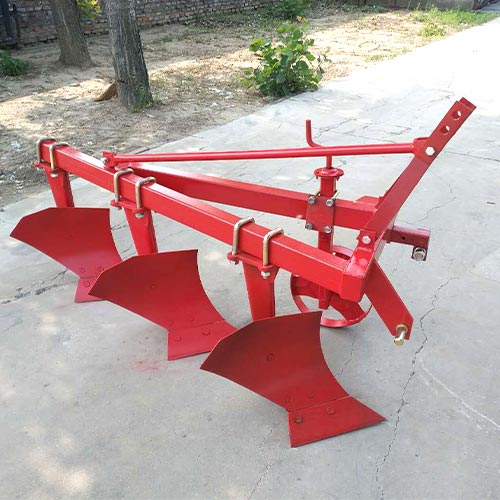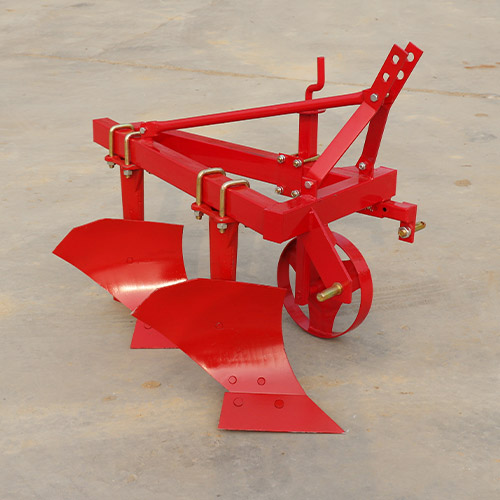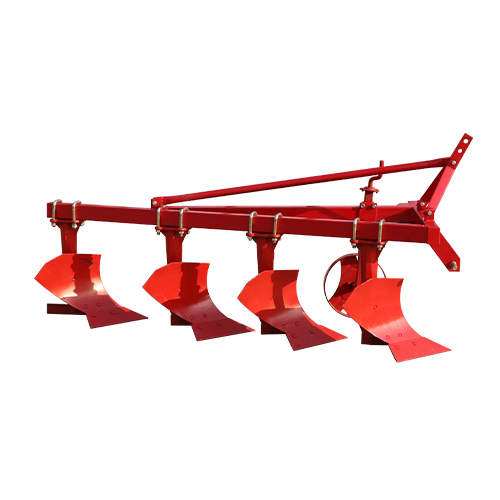Introduction
In the realm of agriculture, the furrow plow stands as a stalwart tool, essential for preparing the soil for planting crops. Its significance in the farming industry cannot be overstated, as it plays a crucial role in ensuring successful harvests. In this blog post, we delve deep into the world of furrow plows, exploring their functionality, benefits, and tips for efficient plowing. Join us on this insightful journey as we unlock the potential of furrow plows and discover how they can revolutionize your farming practices.
Understanding Furrow Plows

Before we delve into the tips for efficient plowing, it is essential to understand the basics of furrow plows. A furrow plow, also known as a moldboard plow, is a traditional farming implement designed to turn over the soil in preparation for planting. By creating furrows or trenches in the soil, furrow plows help aerate the earth, improve water infiltration, and promote root growth. These benefits are crucial for enhancing crop yields and overall farm productivity.
Types of Furrow Plows
There are several types of furrow plows available in the market, each suited for different soil types and farming practices. Some common types include the moldboard plow, chisel plow, disc plow, and subsoiler. Understanding the characteristics and functionalities of each type is essential for selecting the right furrow plow for your specific needs. Refer to the table below for a comparison of different furrow plow types:
| Furrow Plow Type | Characteristics | Best Suited Soil Types | Recommended Depth |
|---|---|---|---|
| Moldboard Plow | Turns over soil | Loamy, clayey | 6-8 inches |
| Chisel Plow | Breaks up soil | Sandy, loamy | 8-10 inches |
| Disc Plow | Cuts and mixes | Sandy, clayey | 4-6 inches |
| Subsoiler | Loosens subsoil | Compacted | 12-16 inches |
Tips for Efficient Plowing

Proper Equipment Maintenance: Regularly inspect and maintain your furrow plow to ensure optimal performance. Check for worn-out parts, lubricate moving components, and adjust settings as needed.Replace any damaged blades or shares to maintain efficient cutting and soil penetration. Keep an eye on the wear of the moldboard and make any necessary repairs or replacements. By staying on top of maintenance tasks, you can prolong the life of your furrow plow and ensure it operates at its best.
Adjusting Plow Depth: Set the plow depth according to soil conditions and crop requirements. Shallow plowing is ideal for light soils, while deeper plowing may be necessary for compacted soils.Remember to adjust the plow depth based on the specific crop being planted, as some may require deeper or shallower plowing for optimal growth. It is important to regularly check and adjust the plow depth as needed throughout the plowing process to ensure the best results for your crops.
Correct Plowing Speed: Maintain a consistent plowing speed to ensure uniform furrow depth and soil turnover. Avoid rushing the plowing process, as it can lead to uneven results.Plowing too quickly can also put unnecessary strain on the equipment and increase the risk of damaging the soil structure. Remember, patience and precision are key when it comes to achieving optimal plowing results.
Overlapping Passes: Overlap each plowing pass slightly to ensure complete coverage and avoid leaving untilled strips of land between furrows.Overlap each plowing pass slightly to ensure complete coverage and avoid leaving untilled strips of land between furrows. Remember to adjust your speed and angle to maintain a consistent depth and avoid creating uneven ridges or valleys in the soil. This will help promote better seedbed preparation and ultimately lead to more productive and uniform crop growth.
Soil Moisture Consideration: Plow when the soil moisture content is optimal for tillage, typically when the soil is moist but not overly wet. Avoid plowing in excessively dry or wet conditions.Plowing in the right soil conditions will help ensure that the soil structure is not damaged and that the tillage operation is successful. It is important to monitor the moisture content of the soil and adjust the timing of plowing accordingly to achieve the best results.
Conclusion: Furrow Plow
In conclusion, furrow plows are indispensable tools for modern farming practices, offering numerous benefits for soil preparation and crop production. By understanding the different types of furrow plows, implementing proper maintenance practices, and following efficient plowing techniques, farmers can unlock the full potential of these essential implements. Incorporating the tips outlined in this blog post can help enhance plowing efficiency, improve soil health, and ultimately lead to bountiful harvests.
FAQs
What exactly is a furrow plow and how does it differ from other types of plows?
Answer: A furrow plow is a type of agricultural implement designed specifically for creating furrows in the soil, which are used for planting seeds. Unlike other plows that may serve different purposes such as breaking up soil or turning it over, furrow plows are specialized for this particular task.
What are the main benefits of using furrow plows for plowing operations?
Answer: Furrow plows offer several benefits, including breaking up compacted soil, improving water drainage, creating an optimal seedbed for planting, and facilitating efficient planting by providing clearly defined rows.
How can I determine the appropriate depth to set my furrow plow for efficient plowing?
Answer: The appropriate depth for setting a furrow plow depends on various factors such as soil type, moisture content, and the type of crop you intend to plant. Generally, it’s recommended to set the plow depth to create furrows that are deep enough to accommodate the root systems of your crops but not too deep to risk damaging them.
What are some common mistakes to avoid when using furrow plows for plowing?
Answer: Some common mistakes to avoid include plowing when the soil is too wet or too dry, which can lead to compaction or poor seedbed preparation. It’s also important to maintain a consistent speed and avoid overlapping passes to ensure uniform furrow formation.
Are there any special maintenance tasks or considerations for furrow plows?
Answer: Regular maintenance of furrow plows is essential to ensure optimal performance. This may include cleaning the plow after each use to remove debris, inspecting and lubricating moving parts, and sharpening or replacing worn components such as blades or shares. Additionally, it’s important to store the plow properly to protect it from corrosion and damage during periods of non-use.


